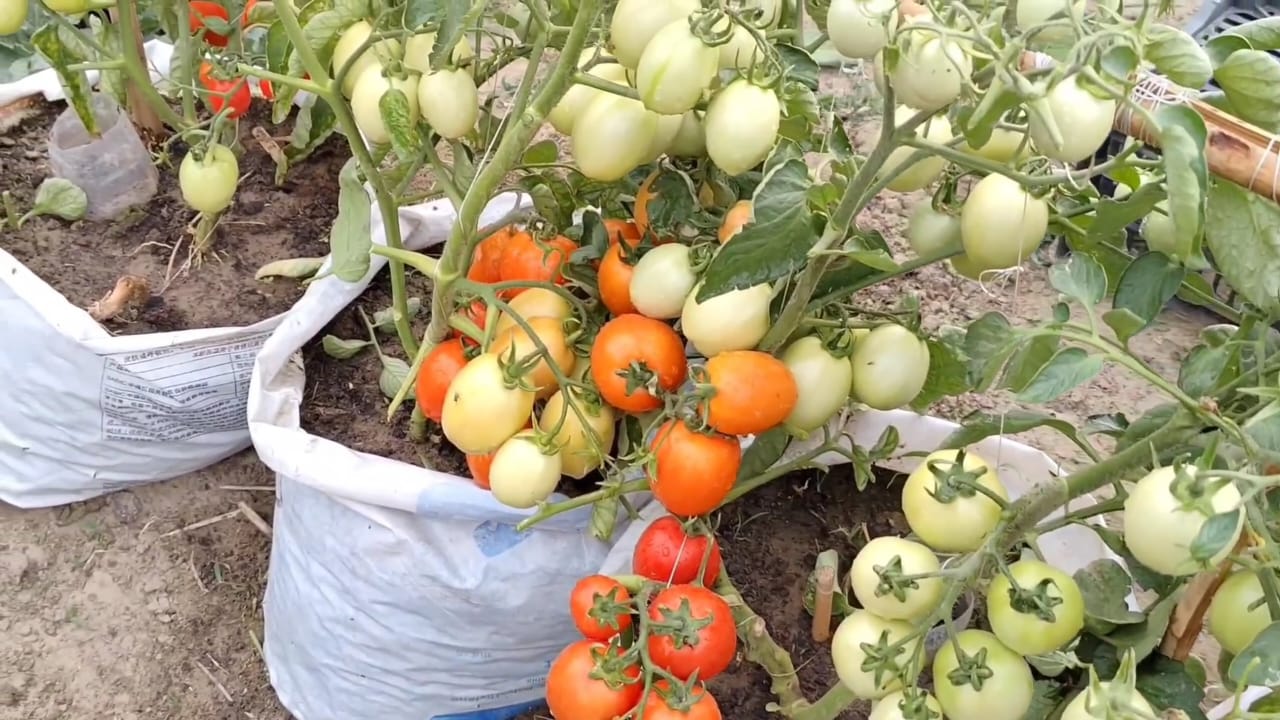Without a doubt, tomatoes are one of the best plants to grow in your yard. They not only look healthy and full, but if you grow them right, they will give you lots of tasty fruit. No matter how much you know about planting, there are a few simple steps that can make a huge difference in how big, healthy, and tasty your tomato plants are.
Let’s go through the right way to plant tomatoes, one step at a time.
Step 1: Get the Ground Ready
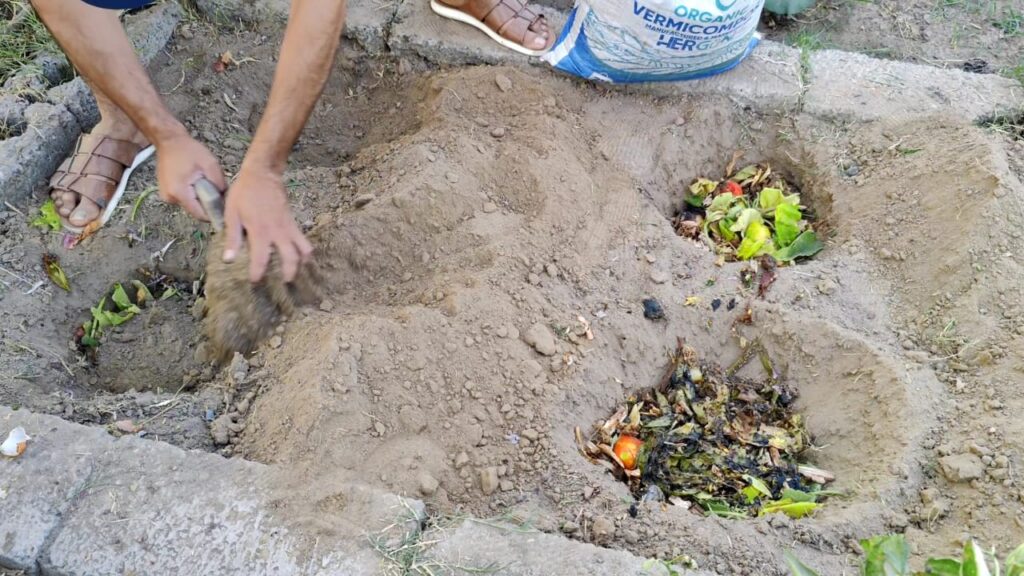
It’s important to have healthy, nutrient-rich earth before you even think about planting. Because tomatoes eat a lot, they need a growth medium that is full of organic matter to do well.
First, add a thick layer of compost, fully composted manure, or vermicompost to your soil. This is very important because
Manure improves the structure of the soil and adds important nutrients like nitrogen.
Composted matter helps the earth hold on to water and stay light and airy, which is great for root growth.
Vermicompost adds beneficial bacteria and helps plants absorb nutrients better, giving them an extra edge.
This step is like building the base for a strong, hardy tomato plant. Because good soil leads to good growth, the crop will be much better in the end.
Step 2: Make sure you dig the right holes.
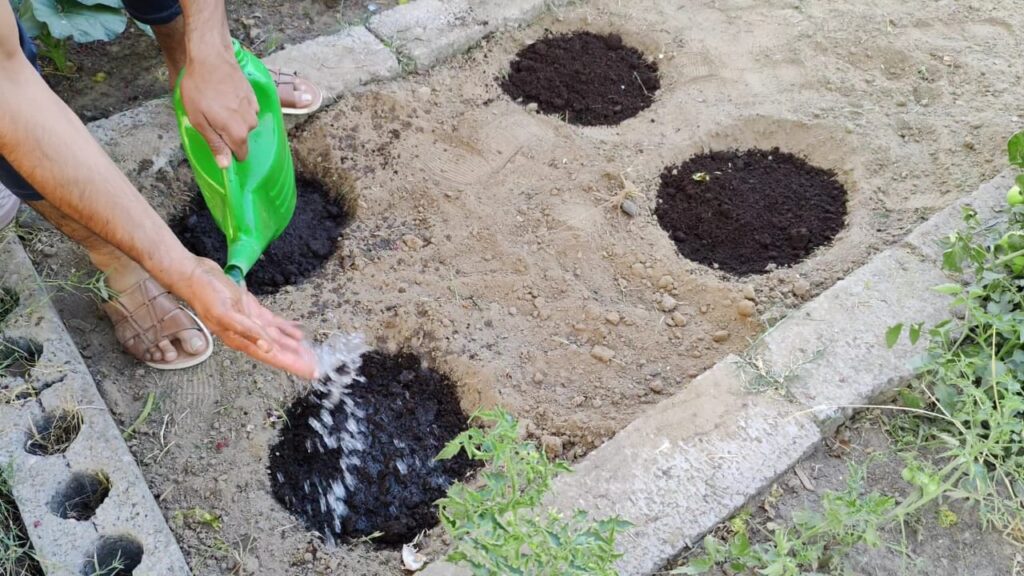
After getting the dirt ready, you can dig the holes for the plants. But there is a trick: growing tomatoes deep is best.
Make sure the holes are deep enough to bury the stem of the tomato plant below the soil. Half of the stem should be buried. It may sound strange, but tomatoes can grow roots from stems that have been buried. Plants can take in more water and nutrients when they have more roots.
Add a little bone meal and neem cake powder to the holes before you put the seeds in them.
Bone meal has a lot of phosphorus, which helps plants grow strong roots and flowers and fruits.
With its natural ability to keep pests away, neem cake powder also adds organic nutrients to the soil.
It gives your plants a healthy start and helps keep them safe from bugs and diseases that might be in the dirt.
Step 3: Be careful with the seedlings
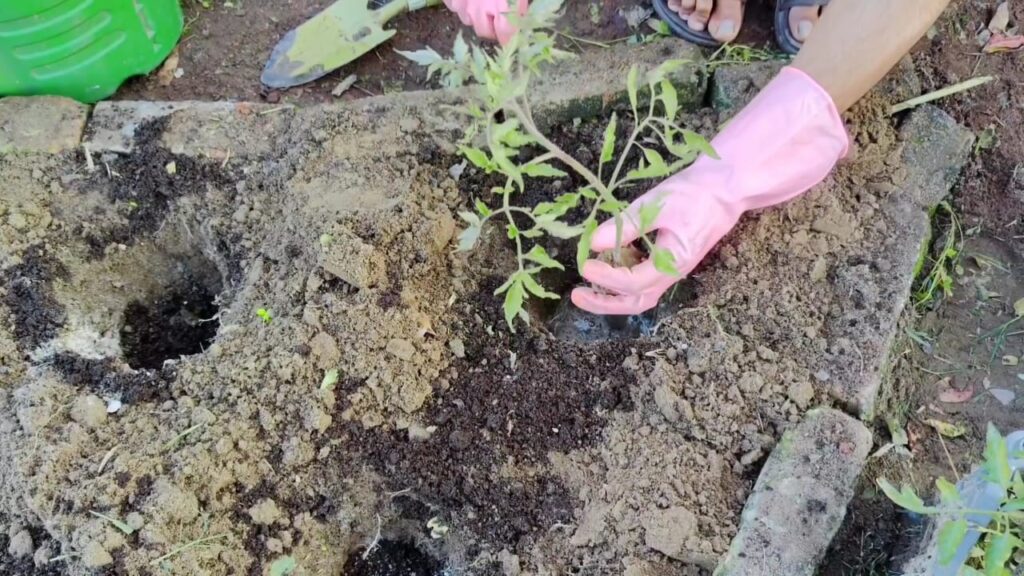
When moving plants from trays to the ground, be careful not to damage their delicate roots.
Cut off the seedlings’ lower leaves before you put them in. The fact that the stem will be underground keeps it from rotting and lets that part of it focus on growing roots.
This kind of deep digging also makes your plants stronger. With deeper roots, they will be less likely to be damaged by wind and better able to handle dry times.
Step 4: Water your plants regularly and thoroughly.
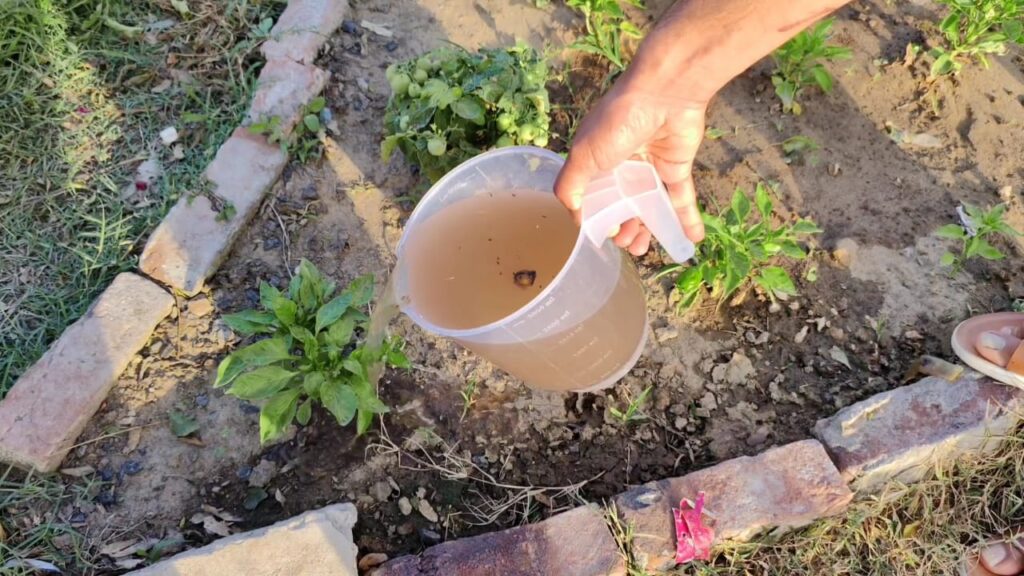
After you put in your seedlings, make sure they get a lot of water. The water helps the dirt around the roots settle down and lessens the shock of moving the plant.
From now on, make sure the dirt is always damp but not soggy. Even though tomatoes don’t like sitting in soggy dirt, they do need to stay moist, especially as they get used to their new home.
As a general rule, water deeply but not as often. This approach makes the roots go deeper into the ground to find water, which makes the plants better able to handle drought in the long run.
Last Thoughts: A Garden Full of Pleasure
That’s all there is to it! With a little care and planning, you can make sure that your tomato plants have a great season with lots of healthy growth and a good crop. Careful planting really does help tomatoes grow, and you’ll be glad you did the extra work when you see those juicy red fruits ripening on the bush.
Thanks for reading this guide! If you liked the article, please share it with other gardeners and click the “Subscribe” button to get more useful gardening tips. Have fun growing!

